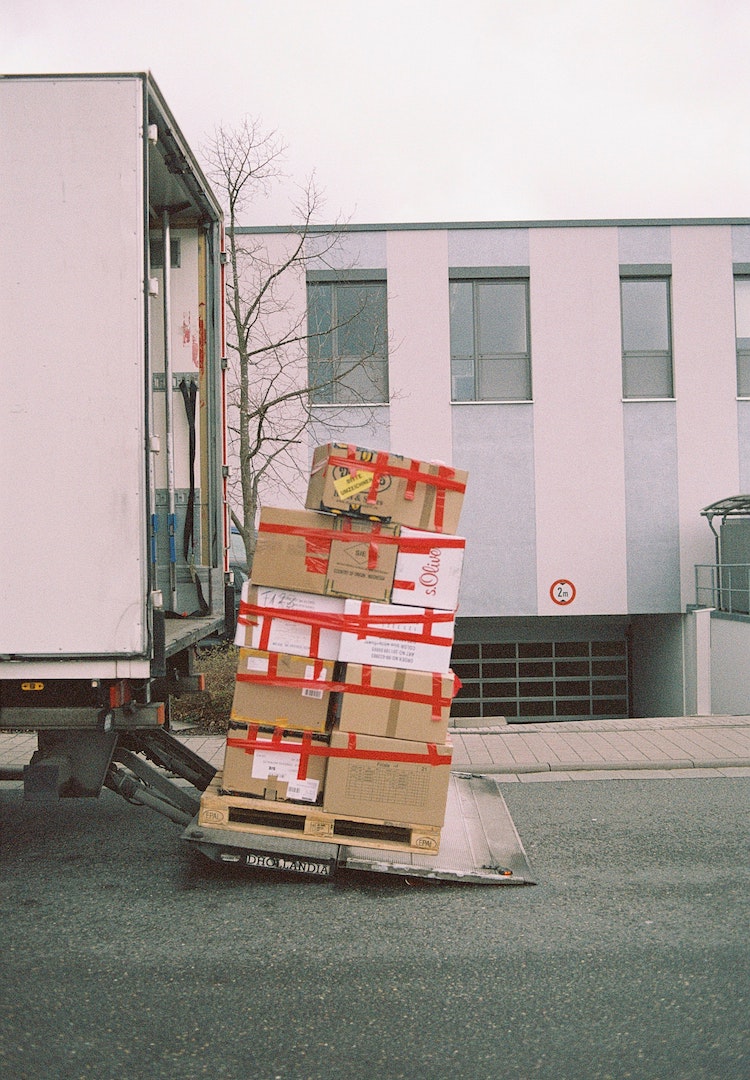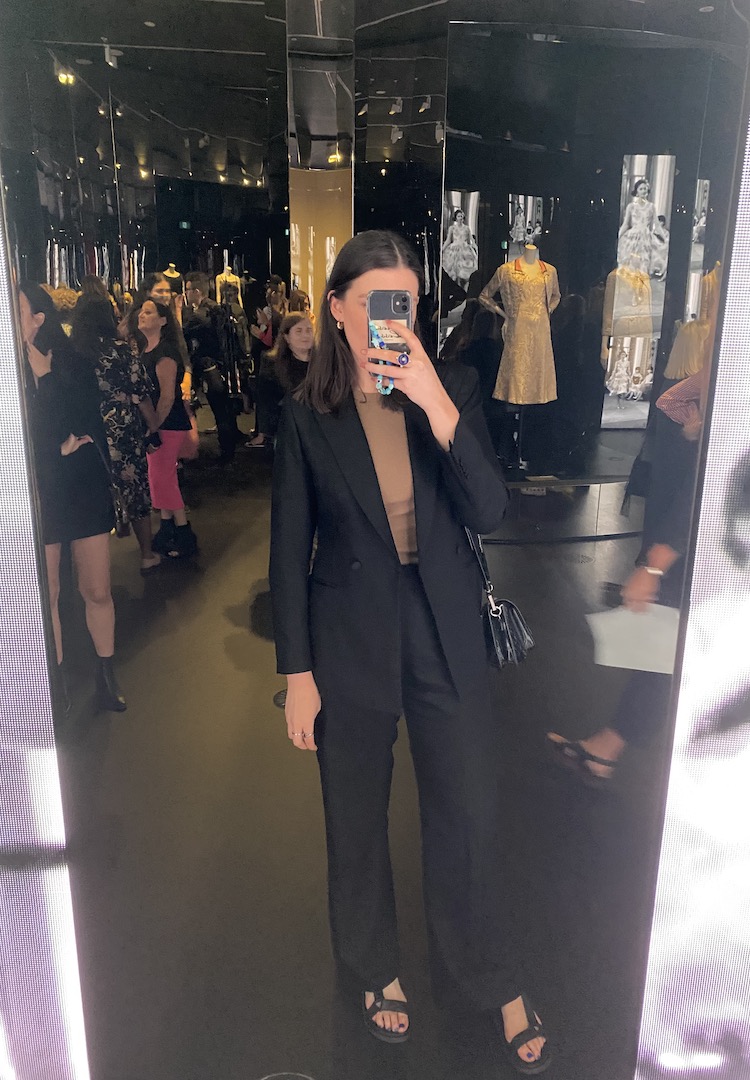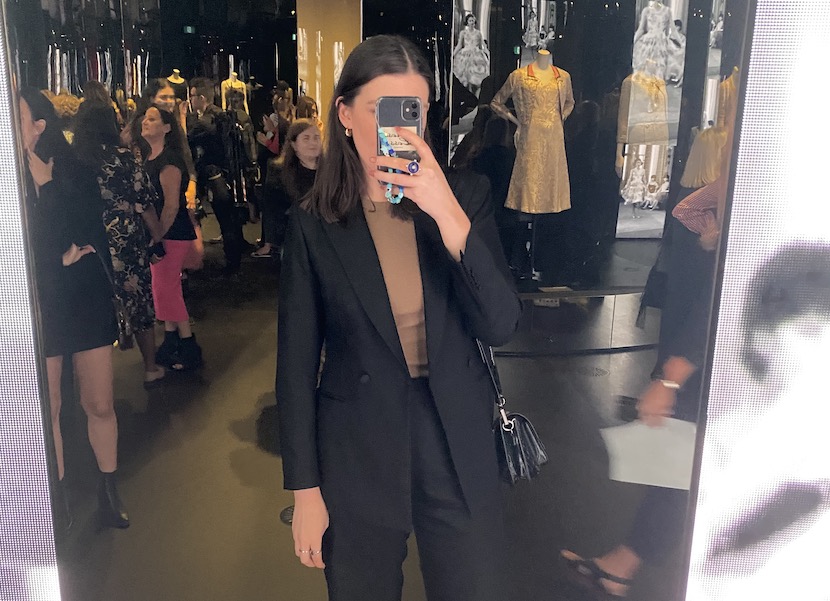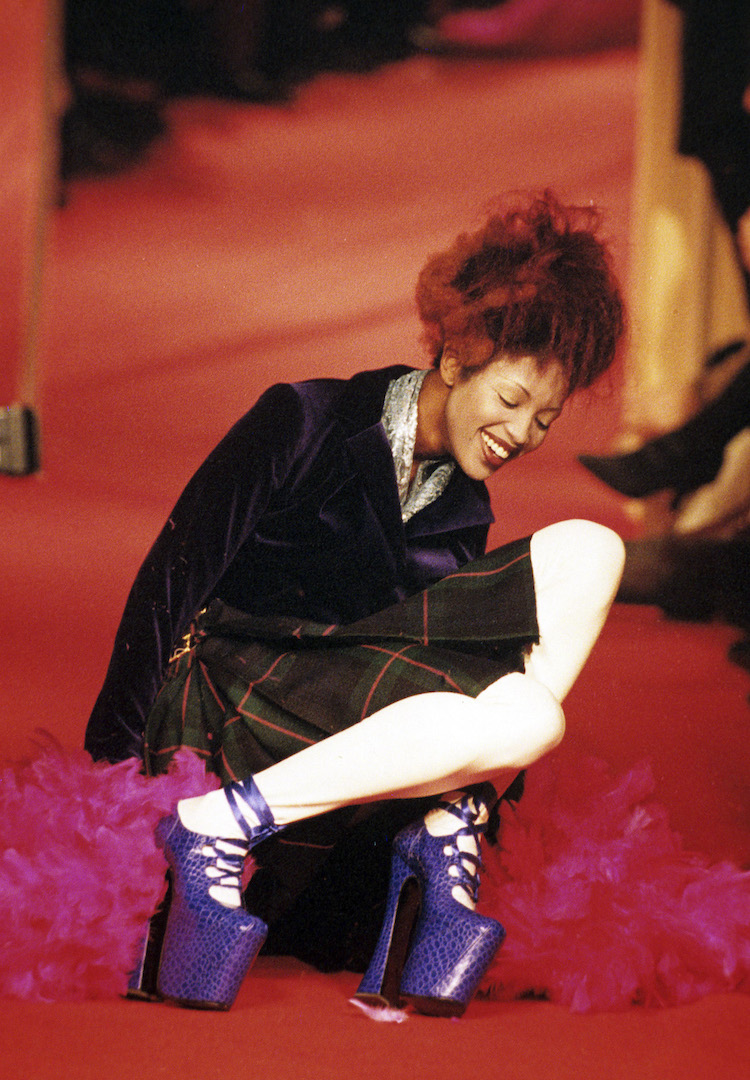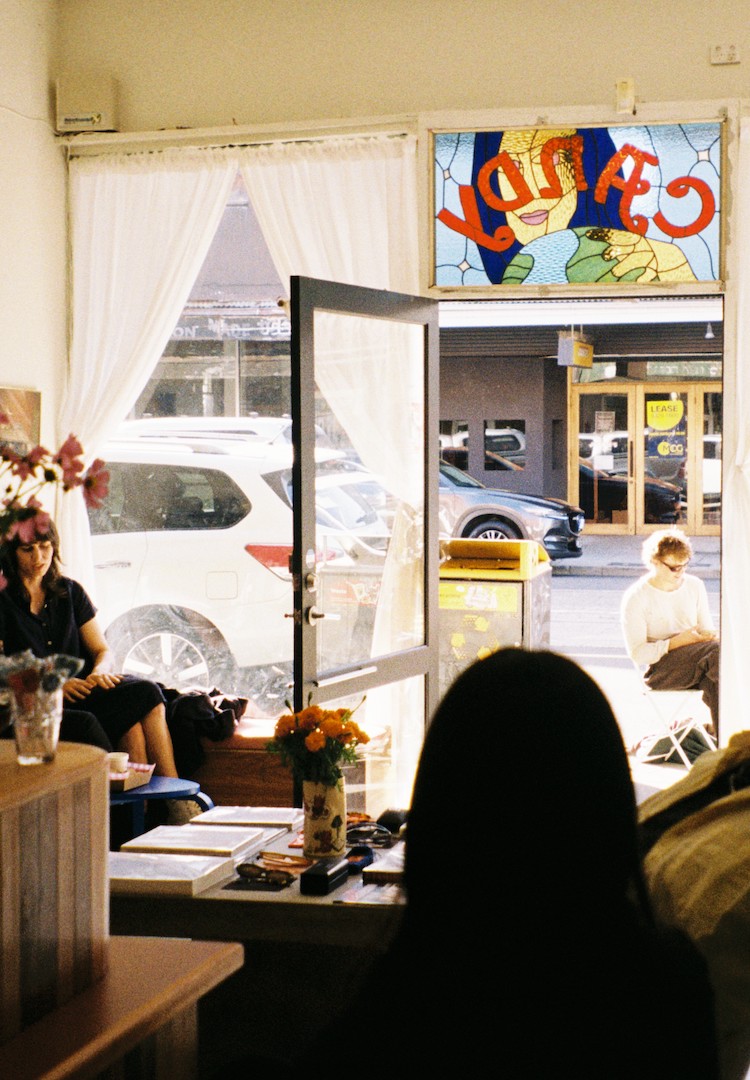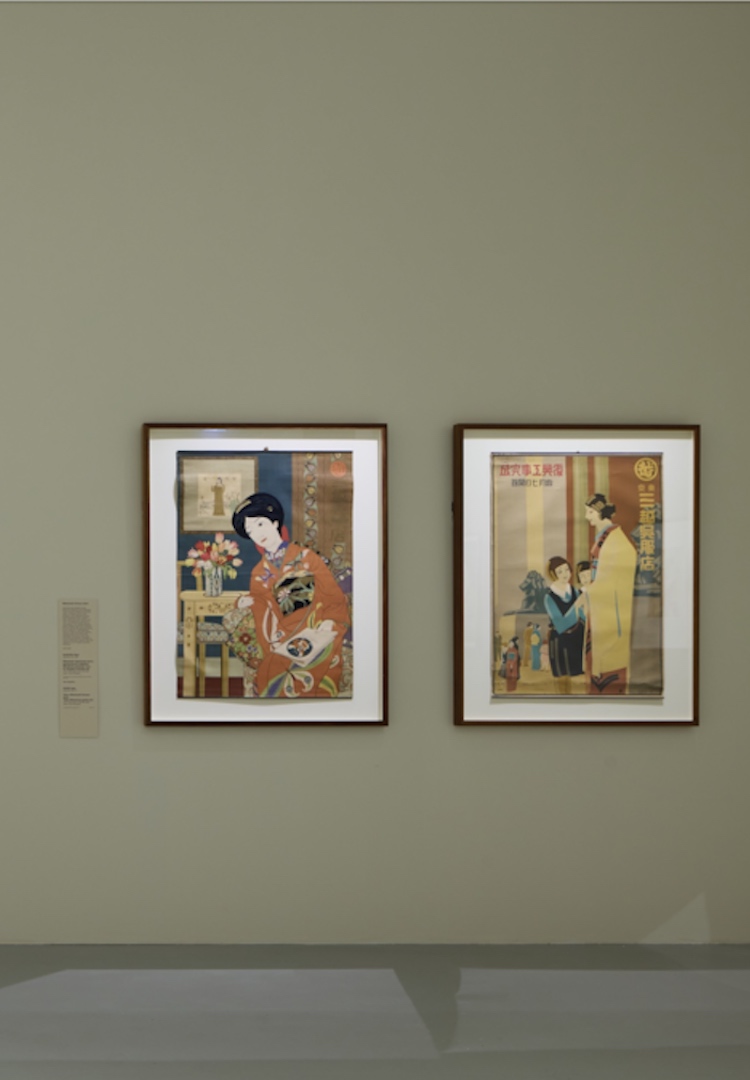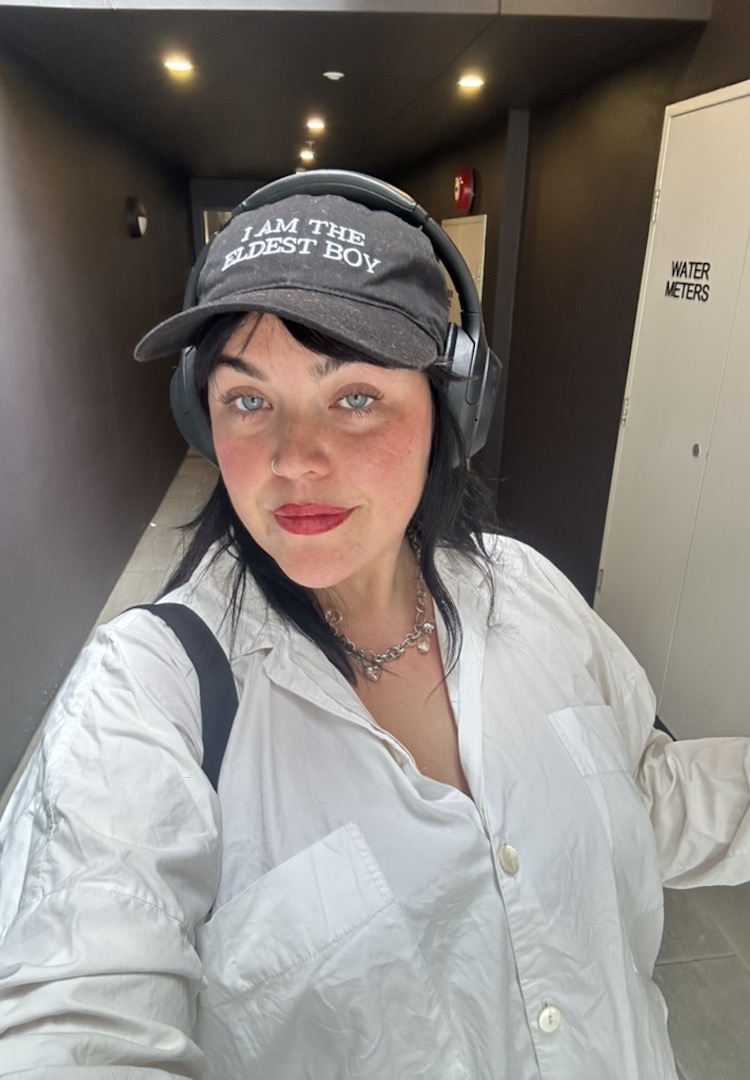What it’s like inside the NGV’s ‘Gabrielle Chanel: Fashion Manifesto’ exhibition
PHOTOGRAPHY BY SEAN FENNESSY
WORDS BY GENEVIEVE PHELAN
Spectacular simplicity.
I can see and feel the enduring legacy of Gabrielle Chanel right now, as I sit in an E Nolan tailored suit at a café window combing through my inbox. It’s in the pockets, the ease of movement, the beautiful form and the way it lets me slink through my day with simplicity and put-togetherness all at once.
It’s fluid but firm, feminine but masculine, simple but masterful. The colour black once carried only connotations of mourning in the 1920s and 1930s, but became the ‘symbol of modernity’ because of Chanel. I can blame her for my mainly monochromatic Melbourne wardrobe today, too.
For more fashion news, shoots, articles and features, head to our Fashion section.
When you think of Chanel, you think of the clothes. But what you’ll learn after touring The National Gallery of Victoria’s (NGV) summer spectacular Gabrielle Chanel: Fashion Manifesto is that she left a much more significant imprint. Womanhood and fashion were forever altered and liberated thanks to Chanel’s earliest designs, and have continued to be reimagined long after her last.
After this morning’s croissant-laden media preview, I was lucky enough to catch up with Danielle Whitfield. She’s one of the fashion and textiles curators at the NGV, specialising in heirlooms of the sartorial species. “I work on acquisitions, exhibition projects, and anything from permanent display changeovers to these major international blockbusters. Everything else is admin and research,” explains Danielle.
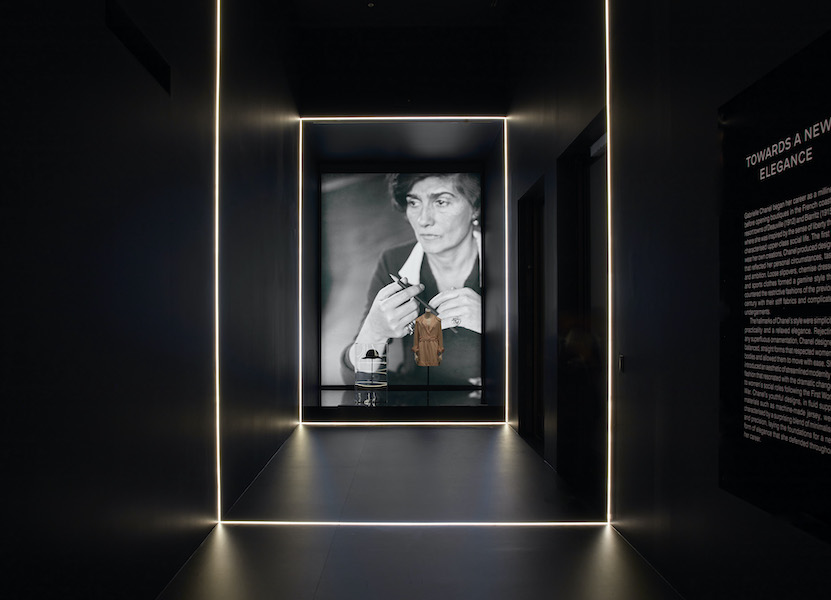
Admittedly, she “couldn’t imagine” what Gabrielle Chanel: Fashion Manifesto would look like at the NGV – its first home outside of a natural residence in Paris, at Palais Galliera. This came down to different scales of galleries, the sourcing of additional works to “fill gaps” of those that could not make the long-haul flight over to Australia, and the narration of those new chapters.
That makes two of us, because I certainly could not picture what years of bending fashion conventions, rewriting the dress code for women in a post-war world, and building a lasting legacy would all look like in 3D across a few big rooms. I expected interlocking Cs and tweed and structural beauty and lion’s heads (she was a Leo, after all). But I didn’t realise just how much of a shrine the exhibition would be to the woman herself: Gabrielle (or more fondly referred to as Coco) Chanel.
The entirety of the exhibition is like stepping through Gabrielle’s life, each room a moment in time, a rewriting of the rules, a chronology of her brilliance. I love fashion, that’s no secret. But, like many mere mortals sans formal training, appreciating ‘art’ isn’t something I’d say I’m very good at. Understanding a story, and becoming enthralled with that story, however, is what makes my heart sing.
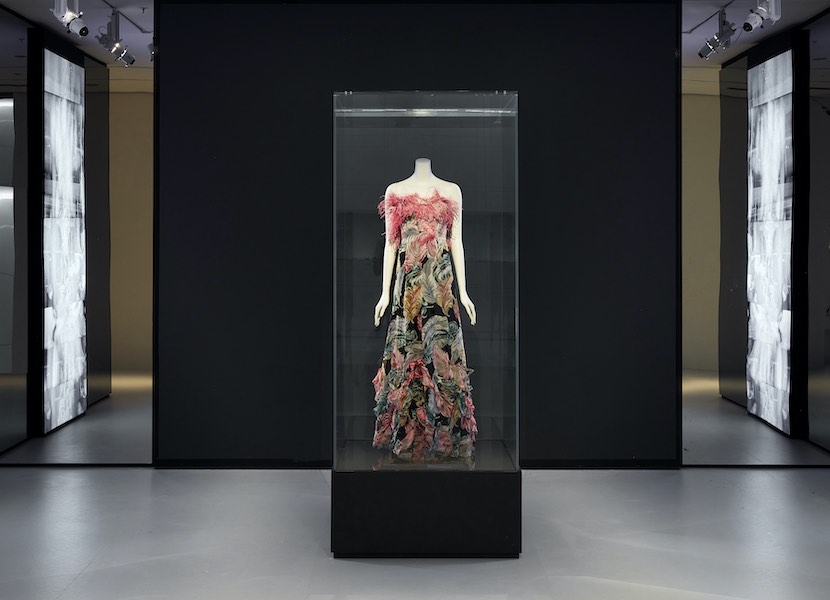
What some might not expect at the NGV’s tweed-filled ode to the late Coco Chanel is the ‘jewellery box’ room placed midway through your pilgrimage through the era. Of course, Chanel and gold chains or intricate broaches are synonymous, but the extravagant opulence of that room feels so starkly juxtaposed with the garments bookmarking it. It’s “austere simplicity”, as one placard read, but there are these little elements of surprise and delight in every piece pedestaled.
Danielle pins the exhibition as “part of an overall philosophy on fashion; introducing principles of simplicity and ease of movement and understatement in dress. Creating clothing for a new woman of the modern age. It was about making clothing that allowed women to lead very active lives, to play sport, to travel, to drive. That is something that [Chanel] continually fought for. It’s feminine elegance, while remaining respectful of women’s bodies.”
In that post-war world, utility, function and form were at the forefront of Chanel’s works. You can see it with the addition of pockets – yes, pockets – to womenswear. We never used to have those handy things until Chanel had her way. It was construction to “service the woman”, as Danielle sees it.
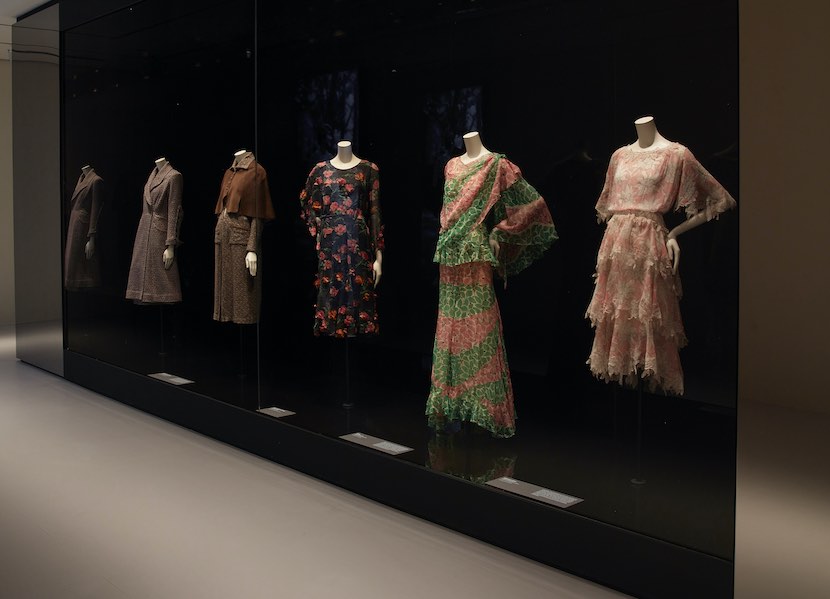
During the media walkthrough, I learnt Chanel’s iconic two-toned shoes were made with purpose, too. Everything calculated, everything built with intention, but never looking like it’s been an arduous or burdensome task to an untrained eye.
“We know so much about Chanel – the monogram, the personal symbolism, the tweed suits. The exhibition says there are other facets to what she did. It emphasises her production of haute couture. It wasn’t the simplicity of construction, but left this impression of lightness and ease,” says Danielle.
Danielle believes it’s that constant challenging of competing ideals, and the duality of simplicity and complexity that will charm Melbourne this summer. “The refinement of her design language is that the materials and the fabrics are so beautiful and so interesting,” she says.
You’ll swan past striking red numbers and reach a crescendoing mirrored room at the conclusion of your (first of many) laps. That final arena is an interpretation of the House of Chanel’s infamous mirrored staircase, filled with party frocks and evening wear that you might dare to dream of replicating today.

According to Chanel News, “It was Gabrielle Chanel’s idea to arrange mirrors along the length of the staircase. They would provide a fragmented view of what was going on downstairs – the show. Mademoiselle Chanel liked to sit at the top of the stairs out of view, watching every detail of each presentation, and the reactions of the guests.”
It seems everything she did was about those details. A little black dress was more than that – it was dappled with shimmery hand-sewn finishes or sparkly cellophane tweed, so it would catch city lights or move with the swaying hips of its wearer at a party.
When it comes to Chanel, I’ve realised that the first thing you see – be it the woman, or the dress, or the woman in the dress – is one thing, but the intricacies and the layers and the nuances that catch the light are where the magnificence lies, both in human and fashion form.
The NGV’s ‘Gabriel Chanel: Fashion Manifesto’ exhibition is running from December 4 to April 26. You can purchase tickets here.

